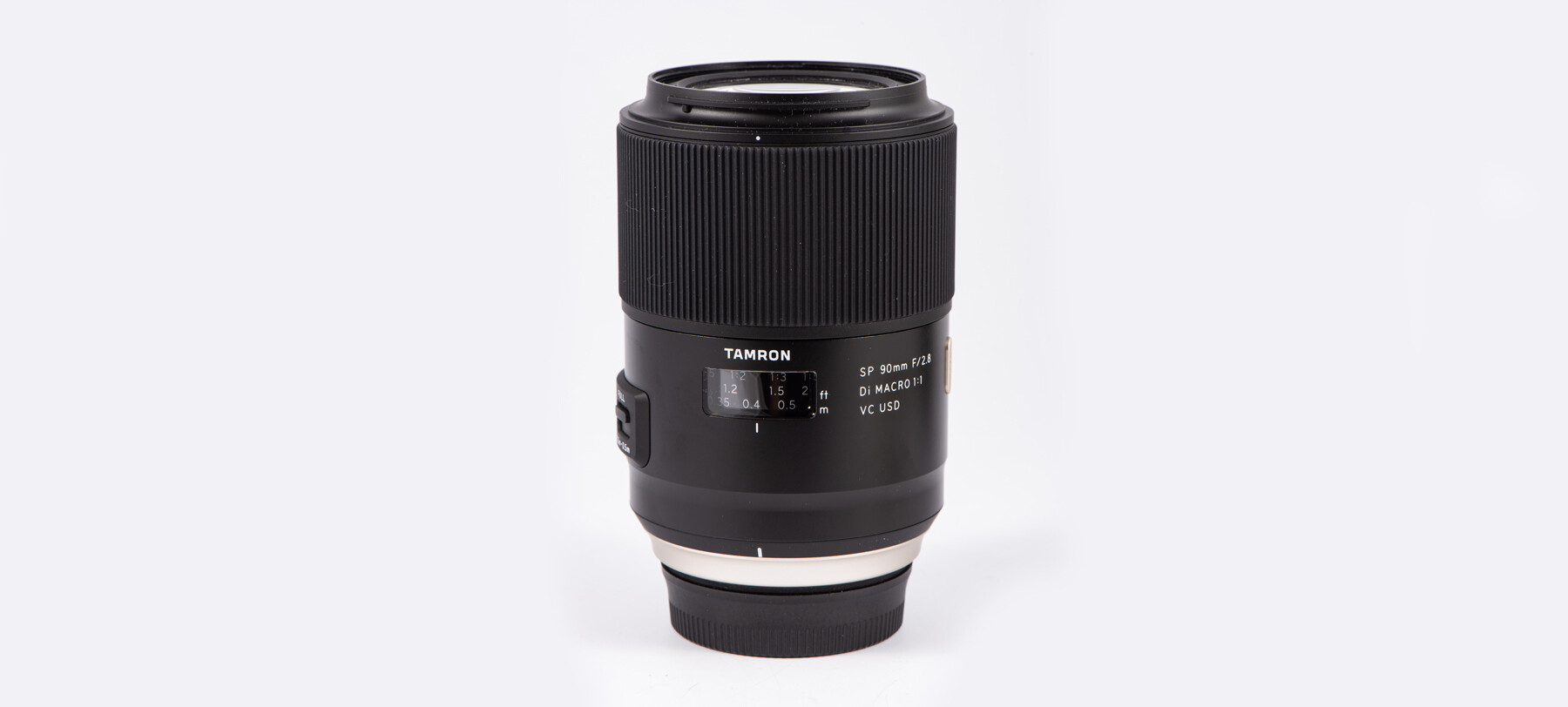
Tamron SP 90mm f/2.8 Di Macro 1:1 VC USD test: close encounters
Posted on May 19, 2020
A macro lens opens up myriad photo opportunities – and there’s none better than Tamron’s SP 90mm f/2.8 Di Macro 1:1 VC USD. With near-silent autofocusing, a powerful image stabiliser and outstanding optical skills, this is the ideal lens to explore the fascinating and challenging world of close-up photography, as Will Cheung discovers.
SPONSORED BY TAMRON
Tamron has had a 90mm macro lens in its range for over 40 years and it has always been renowned for being a great optical performer. The current model was introduced in 2016, when Tamron brought the lens’s legacy right up to date with an optical design and feature set guaranteed to deliver an outstanding performance throughout its focusing range with the latest high-megapixel DSLR cameras.
Of course, it is also worth remembering that while the Tamron SP 90mm f/2.8 Di Macro 1:1 VC USD is designed to deliver an excellent optical performance with close-up subjects, its optical skills are equally impressive for general, scenic and people photography, too.

Before we get to the lens’s optical performance, it’s worth just stopping and appreciating this lens’s physical attributes. Its great balance means it sits well on a full-frame DSLR. In this instance, I used the Nikon D850 and found, when paired with the Tamron lens, it gives a stable shooting platform. This is further helped with the benefit of Tamron’s VC (Vibration Compensation) feature. Partly depress the shutter release and you can see the steadying effect of this powerful image stabiliser instantly in the viewfinder/monitor. The usefulness of an image stabiliser applies to any subject when light levels and your shutter speed start to drop. When you start getting up close to a subject and the tiniest camera movement is greatly magnified, its benefit is correspondingly greater, too.
Tamron’s USD (Ultrasonic Silent Drive) handles autofocusing, giving a fast, accurate and near-silent performance – and it’s responsive, too, dealing with small distance changes with great accuracy. With the wide focusing range of a macro lens, an AF lens can waste time and search for focus so Tamron has thought of that, with a three-position focus range limiter switch so you can select the distance range to suit your subject. So, for normal shooting, set it to Full to utilise the lens’s entire focusing range, and then there’s the option of infinity to 50cm and 50cm to 30cm.

There’s also full-time manual focus override even when AF is set. Making tiny adjustments when the camera/lens hasn’t quite locked on is simple enough, while internal focusing means the lens’s physical size remains constant – an important consideration for macro shooting.
The lens’s focusing scale is marked in feet and metres, with the corresponding image magnification ratio, too. The lens’s minimum focus of 30cm is where you get 1:1 magnification, where a subject measuring 24mm across fills the width of the 24x36mm full-frame format. Getting this close to a subject means depth-of-field is very limited, even at f/11 and f/16. Not only that, but with the depth of the camera body, the lens itself and its bayonet fit hood, it does mean the plane of focus is just 8cm from the hood’s rim, so I had to watch out for any shadows.

For my shoot, I took the Tamron SP 90mm f/2.8 Di Macro 1:1 VC USD for a nature ramble around where I live, with the notion of shooting insects – not a subject I have tackled to any degree – and anything else I could find.
It was a sunny day, which was a great help in allowing smaller lens apertures and fast shutter speeds without having to venture high up the ISO scale, but that benefit was countered by a stiff breeze that made shooting close-ups a significantly greater challenge than it already was. I learnt very quickly to look for subjects where there was some protection from the breeze, or to time my shots right.
There wasn’t a great deal of insect life around, being quite early in the year, but I found a sheltered spot where I saw several orange-tip butterflies flying around, so decided to wait for them to land. Of course, landing is one thing – getting close enough and an angle to photograph them is quite another. I did get a few shots of a couple with their wings open, but I was quite distant. Finally, I managed to get in close to a male, even though he had his wings closed. He stayed in place for a minute or so, even staying put as I ever so gently moved an annoying foreground twig as I tried to get a more straight-on shooting position. He took flight just before I got to the best viewpoint, which is a shame. I spent another 20 minutes in the area without any further success and, as I was waiting, captured a few flies and explored the hedgerow, before wending my way home via the cricket green behind my back garden.

To be honest, taking the Tamron SP 90mm f/2.8 Di Macro 1:1 VC USD out for a photo walk made me aware of the vast image potential within easy reach of where I live when you have a lens of this potential for company. Furthermore, its capable optical performance and the very useful Vibration Compensation feature ensure your images are technically first rate.
For more information, please visit the Tamron website.




